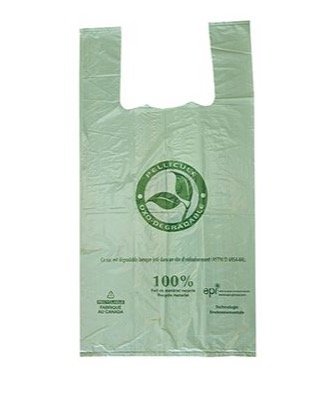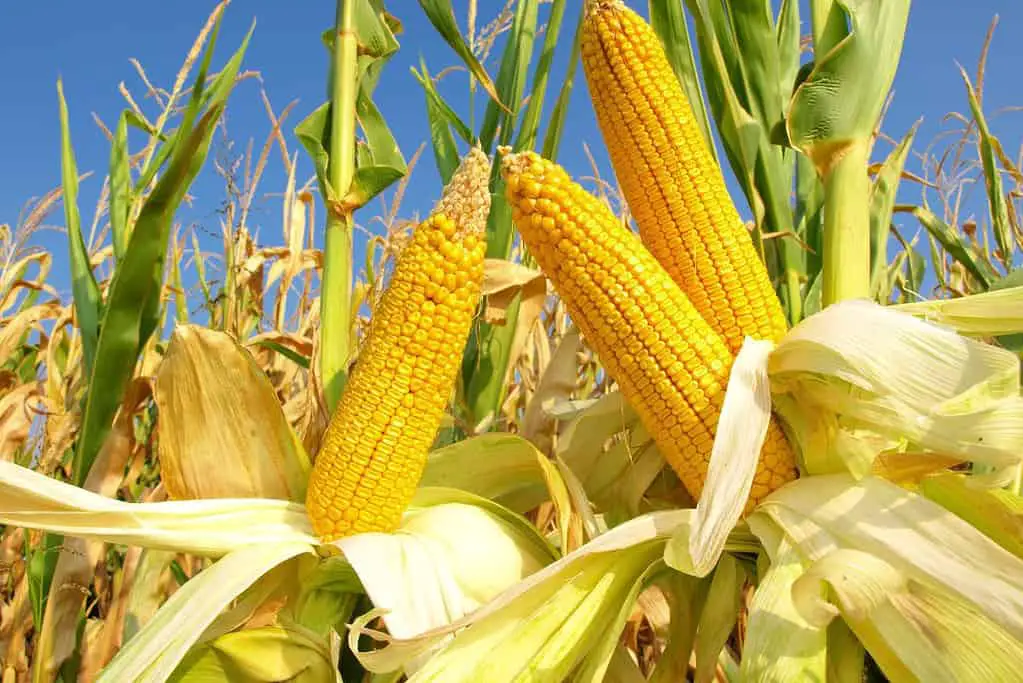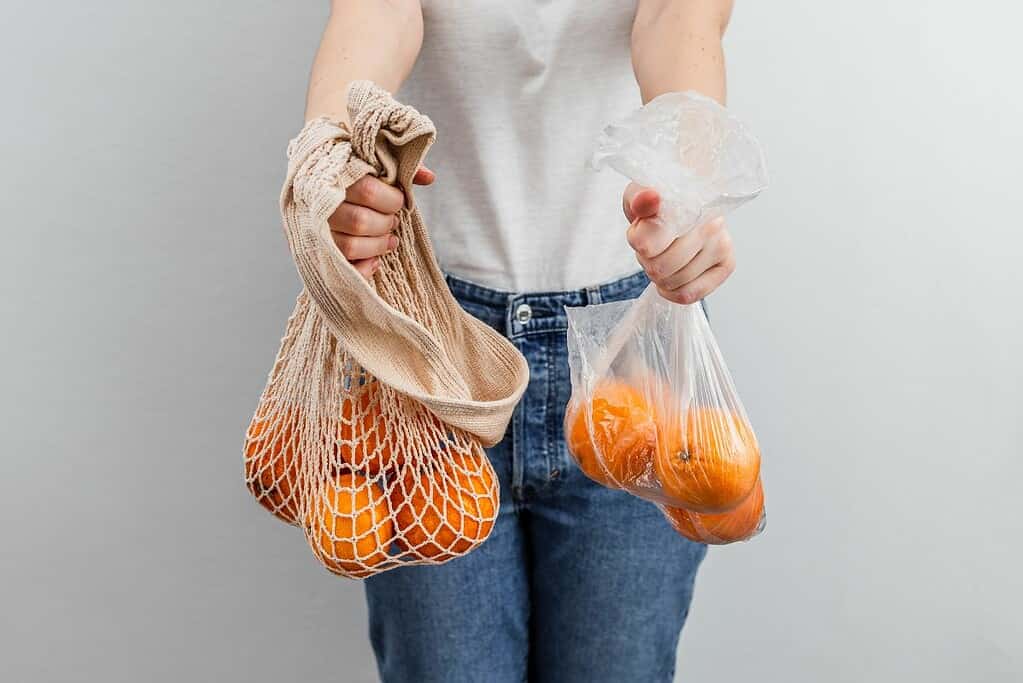Quick Links
Have you noticed the new “green” bags in your supermarket or grocer? They claim to be 100% compostable and biodegradable.
Most of them are made from PLA, a bioplastic. Bioplastic is a new type of plastic generally made from plant starch or sugars, not petroleum. The name BIO in the plastic can be a bit misleading since they don’t biodegrade like a banana peel.
So is PLA really compostable?
The short answer is YES! But the plastic is only compostable if you bring it to an industrial composting facility that accepts PLA plastic, and there aren’t that many.

Are the companies just straight-up lying to us?
Let’s take a look at the definition.
- Biodegrade – breaks down into carbon dioxide, water, and biomass at the same rate as cellulose (paper).
- Disintegrate – the material is indistinguishable in the compost, so it is not visible and needs to be screened out.
- Eco-toxicity – biodegradation does not produce any toxic material, and the compost can support plant growth.
Biodegradable plastic is plastic that will degrade from the action of naturally occurring microorganisms, such as bacteria, fungi, etc., over some time. Note that there is no requirement for leaving “no toxic residue “or for the time it takes to biodegrade. This can take between 100 – 1000 years. Not helping the environment at all.
Degradable plastic is plastic that will undergo a significant change in its chemical structure under specific environmental conditions resulting in a loss of some properties. Please note that there is no requirement for the plastic to degrade from the action of a “naturally occurring microorganism” or any other criteria required for compostable plastics.
A plastic, therefore, may be degradable but not biodegradable, or it may be biodegradable but not compostable (that is, it breaks down too slowly to be called compostable or leaves a toxic residue).
Learn the difference between biodegradable and compostable here.
What is PLA Plastic made from?
PLA, or Polylactic Acid, is mainly made from genetically modified cornstarch, which is so kindly being produced by NatureWorks, a subsidiary company of Cargill, the biggest producer of modified corn in the world.

Sound like a conspiracy here.
READ on…
PLA polylactic acid is made from a “renewable” resource, not petroleum, and when incinerated, it will only leave carbon dioxide and water behind. That’s great news, right???
BUT…It requires an industrial composting facility where a cocktail of microorganisms is continually being fed, and a temperature of 60 C is required for 10 days. It also needs the proper moisture and oxygen to degrade in 3 – 6 months.
In a properly engineered landfill, nothing is meant to degrade. No bag – reusable or conventional plastic shopping bag – will decompose in a
In fact, your compost wouldn’t even reach the desired temperature of 60 degrees Celcius or 140 Fahrenheit. The standard home compost reaches a maximum of 43- 48 C or 110 – 120 F.
It is not recommended to put these PLA biodegradable plastics into your home compost, they might remain there for 100 – 1000 years.
What is PLA plastic used for?
The most common uses of PLA plastic are:
3D Printing
It can be easily sanded, painted and processed and doesn’t require much heat to be molded into the desired shape.
Medical Implants
It is also widely used for medical implants such as screws, anchors or plates since it degrades into lactic acid within 6 to 24 months.
Packaging Material
As packaging material or films for cups and bags, it is also used in “biodegradable” plastic bags, dog poop bags, tableware, and more.
What are the Pros and Cons of polylactic acid bioplastic?
Pros
- It is technically biodegradable (if disposed of at a facility that can manage PLA)
- Works great for 3D printing
- Safe for use in medical equipment and food containers
Cons
- Low heat resistance
- Low strength
- can be difficult to machine process
Where does my “PLA biodegradable plastic bag” go?
You probably think you are doing a good thing for the environment by buying a green bag that claims to be biodegradable and compostable.
Fair enough, the companies make them look green and pleasant, and the advertisement is misleading. Yes, they degrade but only at an industrial composting facility. In the US, there are only 113 of them
See if you can find one in your area by going to find a composter.
I currently reside in Quebec and found two facilities in all of Quebec province. TWO facilities for all of Quebec province
Our local Metro Supermarket hands out 15000 plastic bags per week, and that doesn’t include the fruit and vegetable bags. Who can handle these amounts of waste?
The other problem we find with PLA is people often think it is recyclable, just like our standard plastic, and therefore it ends up in the same bin. This misconception causes many problems in plastic recycling as your PLA products act as contaminants in hydrocarbon-based resins such as PE, PP, PET, and PS.
It costs millions each year for recycling facilities to sort through the different plastics since PLA looks very similar to standard plastic, and the machines can’t identify the difference yet.
What’s the alternative?

So far, the best solution we have is to minimize our use of single-use plastics overall. Bring your green shopping bag to the grocer, and if you like using straws, consider swapping to some alternatives of plastic straws I have listed in this post.
Here are some more tips for you to minimize the use of single-use plastic.
We don’t have a way to dispose of PLA products properly. Buying items that are not heavily packaged in plastic is a good alternative. We have to become aware of the fact that most bioplastics aren’t good for the environment either.
Feel more confident in the way you shop and stay healthy and happy.
Yours Hendrik
Sources:*
